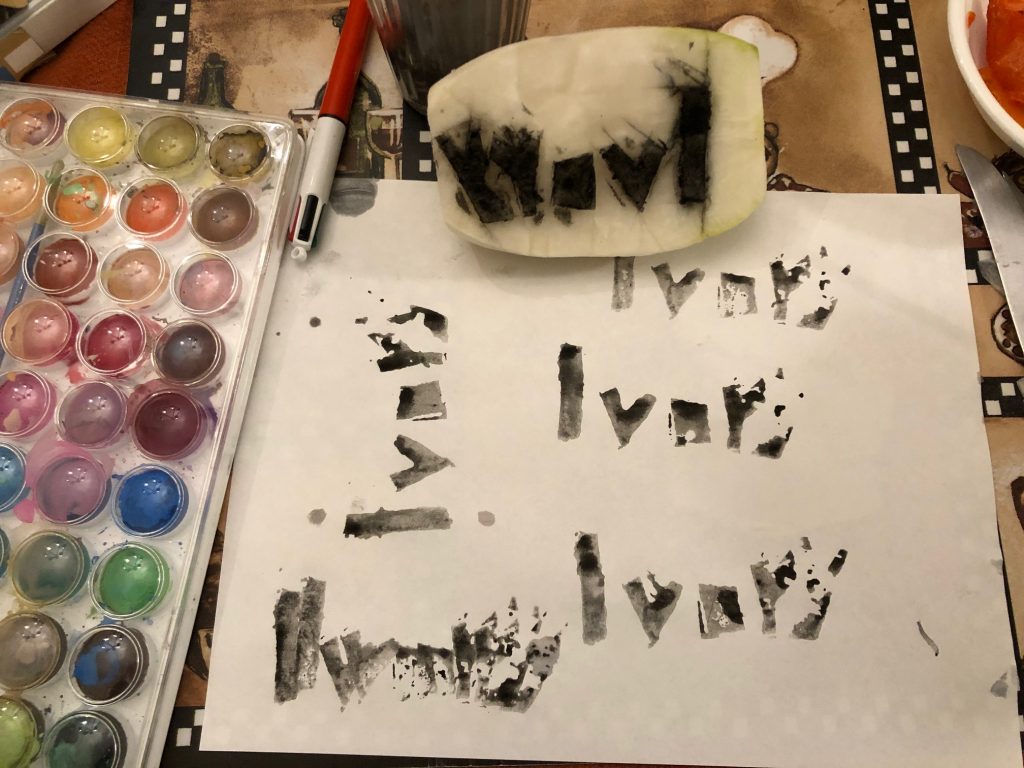Part 1: Manual Scripts

Above is a photo of my manual script of a journal entry I wrote. I typically type more than I write. These days I only write if it’s in my physical planner – which only requires point form. I found starting this task a bit daunting at first. Knowing that I can’t easily revise my writing made me take my time to think before putting my pen to paper (only initially).
I did make a few mistakes while writing. You may notice that there are two places in my writing where I scribble out words. If I had my white out tape next to me while writing I would have used it to make everything look more neat and allows me to write on top of it. I tried to make my writing make sense by thinking of events in more chronological order. Knowing that I was writing something considered a journal entry, I didn’t feel the need to write very neatly – since it’s not something you would typically present to others. I was putting down my own thoughts into writing mainly as a mindfulness activity and help me process my own thoughts.
Halfway through writing, I found that my hand started to cramp, which was a reminder of how long it’s actually been since I’ve written by hand this much. From this small discomfort, I can sympathize to a very small degree with how those monks in Harris’s (2018) podcast felt while hunched over their scripts in the monastery. This was also another reminder that I don’t actually know how to hold my pens correctly when writing. Back in elementary school, I was never able to hold my writing utensils correctly which resulted in me getting a permanent writing callus on my ring finger and getting finger and wrist cramps often. Do schools still teach students the optimal way to hold pencils? Or have they forgone that and skipped to having students develop their typing skills instead?
The most significant difference between writing by hand and the mechanized forms of writing is the way communication has changed. Information that is conveyed now can be updated/revised when typed out and relayed through the Internet instantly for the world to know. According to Innis (2007) the change in technology innovation influenced the spread of more secular topics such as philosophy and science. The wider spread of books led to more people learning to read and being exposed to more of these secular topics as it became more accessible to those who were not of high status. I’m sure more innovations to typing will come through to make relaying information even easier in the future.
Reference:
- Podcast: How it Began: A History of the Modern World, entitled “The Printed Book: Opening the Floodgates of Knowledge”
- Innis, Harold. (2007) Empire and Communications. Toronto: Dundurn Press
Part 2: Radish Printing

I decided to replace the potato with an Asian radish since I didn’t have any potatoes at home. I cut the radishes in half first and let them dry to make it easier and safer to work with. Having a slippery surface isn’t ideal to draw on and can be quite dangerous. However, this drying process turned out to be useless once I started carving out the letters. HAHA.
It took me about 30 minutes to create the stamp. I chose the word IVORY since I though it wouldn’t be too difficult to reproduce. Ivory is the brand of soap I have at home and it was one of the first five letter words I thought of. Since the water content of the radish was high, it was difficult to use a marker to trace where I would cut to create the letters. Thus I decided to go freehand – which in hindsight was a mistake. The first four letters turned out well but I ended up not having enough space for my final letter and so that’s why it didn’t turn out that well.
This activity made me appreciate that we don’t have to do the mechanization of writing anymore. If I had to do this every time I wanted to write a paper, I would not want to be a scholar of any sort. I can see why books were so expensive back then before the printing press was invented. And that also makes my hurt ache thinking about the burning of the Great Alexandria Library with all those hand written books inside.
*I realize too late that I didn’t have to complete both of these tasks. But since I did them here they are!

That’s a big radish! What kind is it specifically? I ended up printing with cooked beets and am excited to see the variety of vegetables being used to complete this task.
Hey Mel!
It’s a Daikon radish. It’s used in a lot of Korean and Japanese dishes.
I like that you used beets! Makes it easier to stamp using the natural pink juice of the beets.